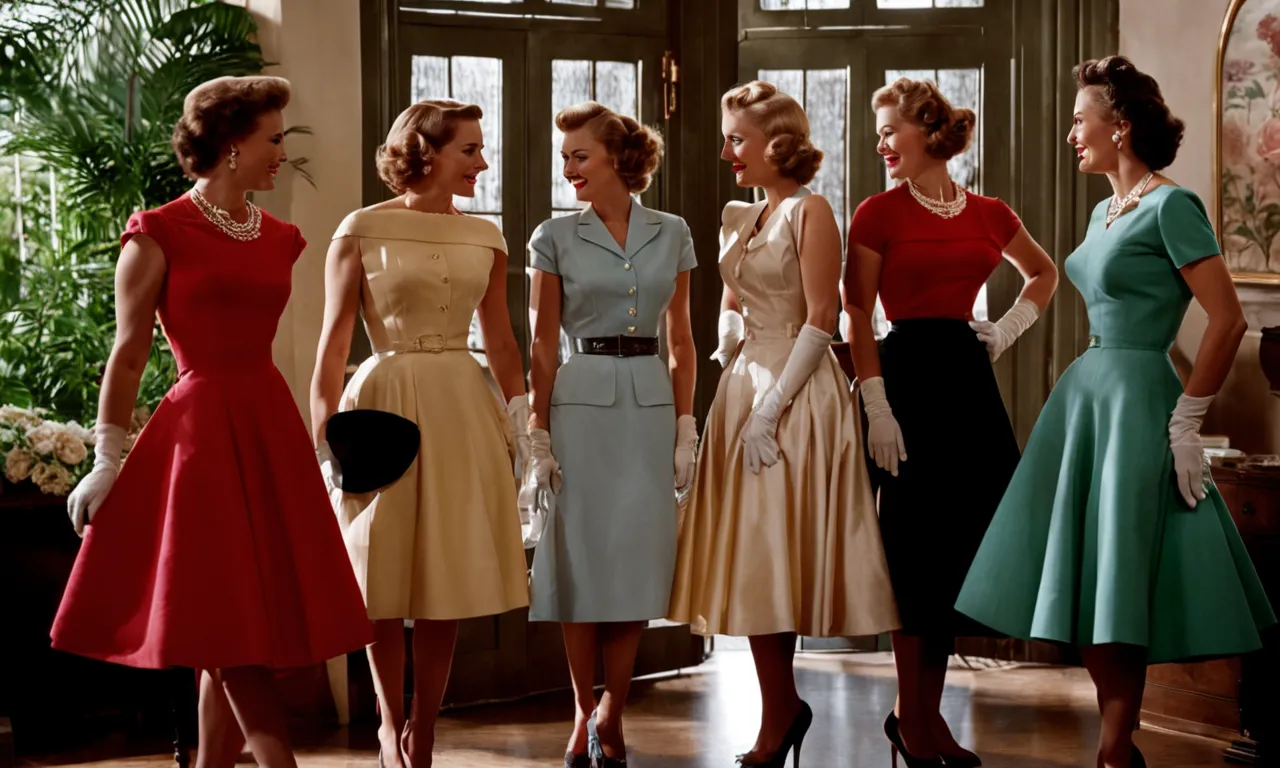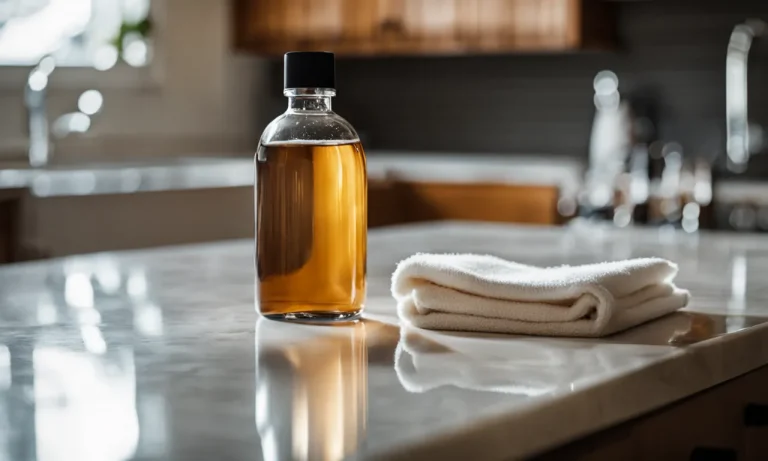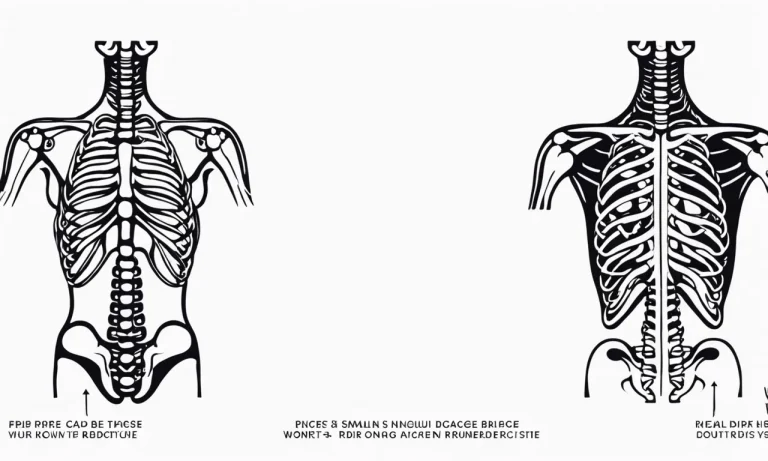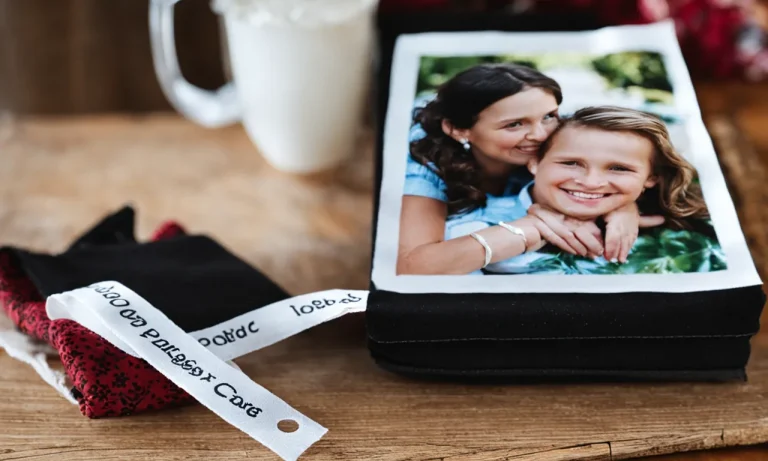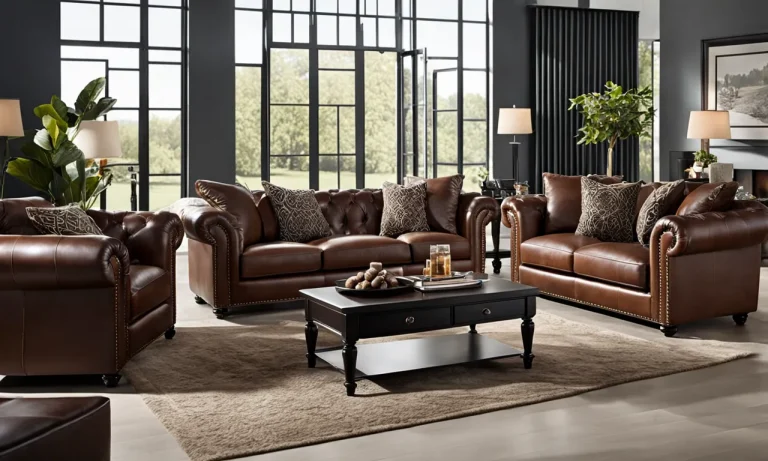How Much Clothing Did The Average Woman Own In 1950?
In the post-World War II era of the 1950s, fashion and women’s wardrobes looked much different than they do today. Clothing was still largely homemade or custom-made, and the average woman did not own the vast quantity of clothes that modern women have access to.
If you’re short on time, here’s a quick answer to your question: The average woman owned about 9 outfits in 1950, much less than the bountiful wardrobes full of fast fashion that many women own today.
Women’s Fashion in the 1950s
Transition from Rationing to Full Skirts and Feminine Silhouettes
In the early 1950s, the fashion industry underwent a significant shift as it transitioned from the wartime rationing of fabrics to a more indulgent and glamorous approach. During World War II, resources were scarce, and clothing was rationed to conserve materials for the war effort.
As a result, women’s fashion was characterized by practicality and simplicity.
However, with the end of the war came a renewed sense of optimism and a desire for more luxurious clothing. The iconic full skirt and feminine silhouette became increasingly popular during this time. Women embraced the hourglass figure, accentuating their waists with cinched belts and embracing skirts that flared out dramatically.
Popularized by fashion icons like Audrey Hepburn and Grace Kelly, this feminine aesthetic became the epitome of elegance and sophistication. The emphasis on curves and femininity was a stark contrast to the boxy and utilitarian styles of the previous decade.
Rise of Ready-to-Wear Fashion
Another significant development in women’s fashion during the 1950s was the rise of ready-to-wear fashion. Previously, most clothing was custom-made or sewn at home, but advancements in manufacturing and the availability of new materials made ready-to-wear clothing more accessible and affordable for the average woman.
Department stores and boutiques began offering a wide range of ready-to-wear options, catering to different budgets and style preferences. This shift allowed women to express their individuality and keep up with the latest trends without the need for a personal dressmaker.
Ready-to-wear fashion also played a crucial role in shaping the fashion industry as we know it today. It paved the way for mass production and the democratization of fashion, making stylish clothing accessible to a broader audience.
Fabrics and Textiles
The choice of fabrics and textiles in women’s fashion during the 1950s was diverse and luxurious. Silk, satin, and taffeta were among the popular choices for formal dresses and evening gowns, exuding elegance and sophistication.
Cotton and rayon were commonly used for everyday wear, offering comfort and breathability. Synthetic fabrics like nylon and polyester also gained popularity, as they were easy to care for and resistant to wrinkles.
It’s important to note that the availability and affordability of certain fabrics varied depending on the socioeconomic status of the individual. While silk and satin may have been within reach for some, others had to make do with more affordable alternatives.
The Average Woman’s Wardrobe
Fewer Clothes Due to Expense
In 1950, the average woman’s wardrobe consisted of fewer clothes compared to today. This was primarily due to the high cost of clothing during that time period. Clothes were considered a luxury and many women had to carefully budget their expenses to afford even a few new pieces each year.
As a result, women had to make do with a limited number of outfits and were more likely to repair and alter their existing clothes to extend their lifespan.
Focus on Versatility and Mix-and-Match
With a limited number of clothing options, women in the 1950s had to be creative in making the most out of what they had. Versatility and mix-and-match became essential concepts in building a functional wardrobe.
Women would invest in classic, timeless pieces that could be easily paired with different accessories to create multiple outfits. For example, a simple black dress could be dressed up with statement jewelry for a fancy event or dressed down with a cardigan and flats for a casual outing.
Outfits for Different Occasions
Despite having fewer clothes, women in the 1950s still made sure to have outfits suitable for different occasions. There was a clear distinction between everyday attire, formal wear, and special occasion outfits.
Everyday attire typically consisted of a dress or skirt paired with a blouse or sweater, while formal wear included tailored suits or dresses for events like weddings or parties. Special occasion outfits were reserved for milestone events such as anniversaries or holidays, and often featured more elaborate designs and fabrics.
It’s interesting to note how fashion has evolved over the years and how our wardrobes have expanded. Nowadays, with the rise of fast fashion, it’s not uncommon for women to own dozens of outfits, but the concept of versatility and mix-and-match can still be applied to create a functional wardrobe.
So, next time you find yourself overwhelmed with clothing options, take a page from the 1950s and focus on quality pieces that can be styled in various ways!
How Home Sewing Impacted Wardrobes
Home sewing played a significant role in shaping the wardrobes of women in the 1950s. During this time, owning and operating a sewing machine was a common skill among households. The impact of home sewing on women’s wardrobes can be seen in various aspects, including the prevalence of home sewing skills, the ability to mend and repurpose clothing, and the option to customize garments to individual preferences.
Prevalence of Home Sewing Skills
In the 1950s, it was not uncommon for women to possess basic sewing skills. Many women learned sewing techniques from family members or through formal education. The availability of sewing patterns and sewing classes also contributed to the widespread knowledge of home sewing.
This allowed women to create their own clothing, altering the fashion landscape by introducing unique designs and personal touches.
Ability to Mend and Repurpose
Home sewing skills also gave women the ability to mend and repurpose their clothing. In an era where resources were not as readily available as they are today, being able to repair garments was essential.
Women would often mend small tears or replace worn-out sections of clothing, prolonging the lifespan of their garments. Additionally, women would repurpose old clothing items, transforming them into entirely new pieces.
This not only saved money but also allowed for a more sustainable approach to fashion.
Home Sewing for Customization
One of the most significant impacts of home sewing on wardrobes was the ability to customize garments. Women could create clothing that perfectly fit their body shape and personal style. This customization allowed for a sense of individuality and self-expression, as women had the freedom to choose fabrics, colors, and patterns that resonated with their preferences.
The result was a wardrobe that was unique and tailored to each woman’s taste.
According to Vintage Dancer, the average woman in the 1950s owned around 30 garments. This number included dresses, skirts, blouses, and outerwear. With the ability to sew at home, women had the opportunity to expand their wardrobes further by creating additional pieces or altering existing ones.
Differences From Today’s Wardrobes
Fast Fashion and Overconsumption
One significant difference between clothing ownership in 1950 and today is the rise of fast fashion and overconsumption. In the past, clothing was considered a long-term investment, with women owning a limited number of high-quality garments.
However, in today’s fashion landscape, trends change rapidly, leading to a culture of disposable clothing. Fast fashion brands produce inexpensive, trendy items that are quickly discarded, resulting in a higher volume of clothing owned by the average woman.
This overconsumption has negative environmental impacts, contributing to textile waste and pollution.
According to a study by the Ellen MacArthur Foundation, the fashion industry produces around 92 million tons of textile waste each year. This excessive consumption of clothing not only puts a strain on the environment but also perpetuates unethical labor practices in the industry.
Casualization of Fashion
Another noticeable difference between the 1950s and today is the casualization of fashion. In the past, women’s wardrobes consisted primarily of dresses, skirts, and tailored suits, even for everyday wear.
However, with changing societal norms and the advent of more relaxed dress codes, the average woman today owns a larger proportion of casual and comfortable clothing.
Jeans, t-shirts, and athleisure wear have become staples in modern wardrobes, reflecting a more relaxed and informal approach to fashion. This shift towards casualization is influenced by factors such as the rise of remote work, increased focus on comfort and practicality, and the influence of popular culture.
Decline of Home Sewing Skills
In the 1950s, home sewing was a common skill among women, and many garments were handmade or custom-tailored. Women took pride in creating their own clothing, allowing for more individuality and uniqueness in their wardrobes.
However, with the advent of ready-to-wear clothing and the decline of home sewing skills, the average woman today relies more on mass-produced garments.
The convenience and affordability of ready-to-wear clothing have led to a decline in home sewing, with fewer women possessing the necessary skills and knowledge to create their own garments. This shift has resulted in a more standardized and homogeneous fashion landscape, where individuals have fewer opportunities to express their personal style through unique, handmade pieces.
Conclusion
In conclusion, we can estimate that the average 1950s woman owned around 9 outfits – a small wardrobe by today’s standards of fast fashion and quickly changing trends. Her wardrobe focused on versatile pieces that could be mixed and matched, and she relied heavily on her own sewing skills to customize and mend clothing.
While women today own vastly larger wardrobes, there is much we can learn from the resourcefulness and craft of the 1950s woman’s approach to fashion and clothing.

